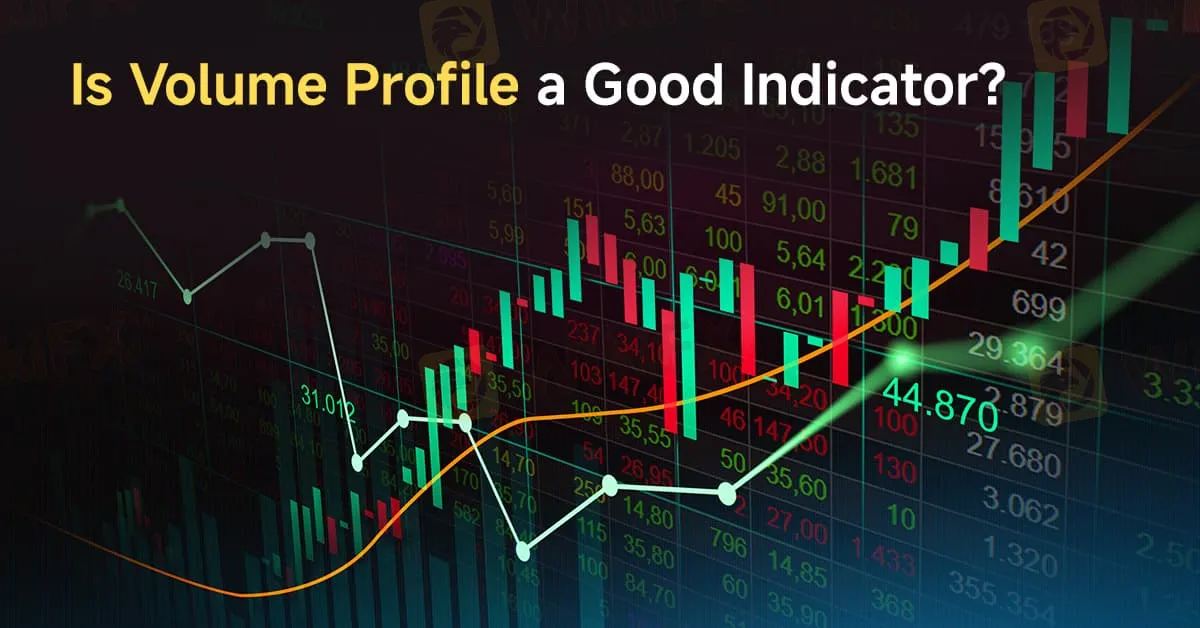简体中文
繁體中文
English
Pусский
日本語
ภาษาไทย
Tiếng Việt
Bahasa Indonesia
Español
हिन्दी
Filippiiniläinen
Français
Deutsch
Português
Türkçe
한국어
العربية
Is Volume Profile a Good Indicator?
Abstract:The Volume Profile shows the amount of volume traded at different price intervals over a specified period. It is displayed as horizontal bars, usually overlaid on the price chart. Each horizontal bar represents the volume that occurred in that price range over a specified time. The Volume Profile can be set to the current session, such as that day, or multiple sessions, like the total Volume Profile for the last twenty days.

What Is Volume Profile?
The Volume Profile shows the amount of volume traded at different price intervals over a specified period. It is displayed as horizontal bars, usually overlaid on the price chart. Each horizontal bar represents the volume that occurred in that price range over a specified time. The Volume Profile can be set to the current session, such as that day, or multiple sessions, like the total Volume Profile for the last twenty days.
Why Is Volume Profile Important?
Most Technical Tools Look at the Same Information
Most technical analysis indicators derive calculations from the price, which is why most of them lag. Because theyre derived from price, most indicators usually show information traders can see from the price chart alone. In short, most technical tools have everyone looking at the same information and chasing the same ideas, giving little to no edge.
Volume Profile is Different from Most Other Technical Tools
Volume Profile is not derived from price or lagging, which is rare in technical analysis. Volume Profile shows the activity that ultimately drives price movement—trading volume activity at different price levels. This is not data that traders can see from the price chart alone or even traditional volume bars.
Volume Profile Has Incredible Accuracy Down to the Lowest Timeframes
Most other indicators pick up a lot of meaningless noise on lower timeframes, reducing their accuracy. Volume Profile suffers less from this flaw because it uses “primary data” rather than being derived from the price or other data.
Incorporating Volume Profile into Your Trading Strategy
Decide How Far Back to Build the Volume Profile on Your Chart
For example, a 20-day Volume Profile setting will build the cumulative Volume Profile over the last 20 trading days.
Mark Out the Distribution Blocks and Ledges to Find Support and Resistance Levels
Determine Price Levels Above or Below to Be Comfortable Being Long or Short
Common Mistakes to Avoid When Using Volume Profile
Not Using Multiple Time Frame Analysis
Not Identifying Distribution Blocks
Overtrading Unclear Setups
Not Having a Trading Plan or Managing Risk
Pros & Cons of Using the Volume Profile Indicator
Pros
1. Volume Profile lets you see significant levels that often cannot be found from the price chart alone.
2. It is not a lagging indicator.
3. Traders can use Volume Profile independently or with other strategies.
Cons
1.It is a discretionary tool without fixed rules that takes time to learn.
2.Not all charting platforms support Volume Profile.
Conclusion
Volume Profile is a unique and powerful tool in the realm of technical analysis, providing insights into market behavior that other indicators might miss. By highlighting key price levels based on trading volume, it offers traders a distinctive edge. However, like any tool, it requires practice and understanding to use effectively. Integrating Volume Profile into your trading strategy can enhance your market analysis and trading decisions, but its essential to be aware of its limitations and ensure it fits within your overall trading plan.

Disclaimer:
The views in this article only represent the author's personal views, and do not constitute investment advice on this platform. This platform does not guarantee the accuracy, completeness and timeliness of the information in the article, and will not be liable for any loss caused by the use of or reliance on the information in the article.
Read more

Check Yourself: Are You Always Rushing for Trades?!
With market fluctuations happening in real-time and profits hinging on split-second decisions, many traders develop an impulse to act quickly. But have you ever stopped to ask yourself: Am I rushing into trades? If you’re constantly clicking “Buy” or “Sell” in a flurry of excitement or anxiety, you may be falling into a dangerous trap that could cost you more than you realise.

Exposing Trading Academy Scams: How Aspiring Traders are at Risk
In the age of digital finance, the promise of financial freedom through trading has never been more alluring. Social media is flooded with advertisements for trading academies claiming to turn beginners into expert traders in weeks, offering ‘guaranteed’ profits and ‘exclusive’ strategies. However, behind the glossy marketing lies a sinister reality as many of these so-called academies are nothing more than elaborate scams designed to exploit unsuspecting traders.

JustForex vs JustMarkets: A Comprehensive Comparison in 2025
Selecting the right forex broker can make the difference between trading success and frustration for most investors, especially retail investors. As retail traders gain unprecedented access to global markets, the choice between platforms like JustForex and JustMarkets becomes increasingly significant. Both brokers offer some shining features within the forex and CFD trading space, but their approaches differ in some areas.

These 5 Mental Biases Are Sabotaging Your Trades
Discover how five cognitive biases silently sabotage your trading decisions, impacting profits and increasing the risk of losses.
WikiFX Broker
Latest News
Investor Alert: FCA Exposes 9 Unregistered Financial Companies
Do Tariffs Refueling Inflation? Understanding the Connection
U.S. Stocks Bounce Back for Two Consecutive Days, Is a Positive Outlook Ahead?
U.S. Consumer Weakness: Is It Good or Bad?
Robinhood Launches Prediction Markets Hub for Trading Events
BaFin Warns Consumers About EmexFunding’s Unauthorized Services
Gold Hits New Highs: Is Now the Time to Buy?
Key Points Every Forex Beginner Must Know
Why US Lawmakers Urge Trump to Drop Crypto Before It Harms America
CME Group Adds Solana Futures in Both Standard and Micro Contracts
Currency Calculator






